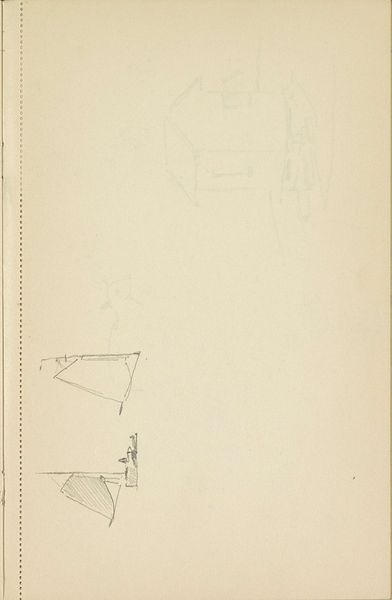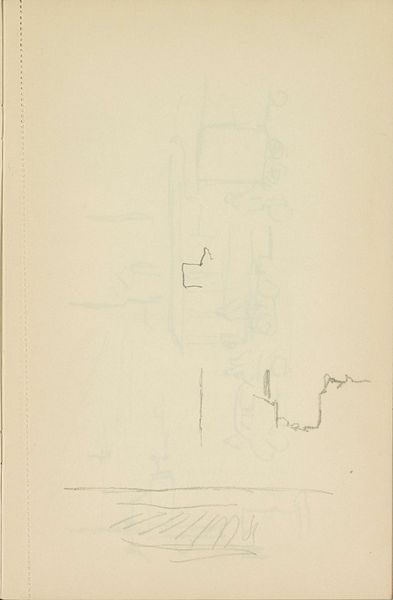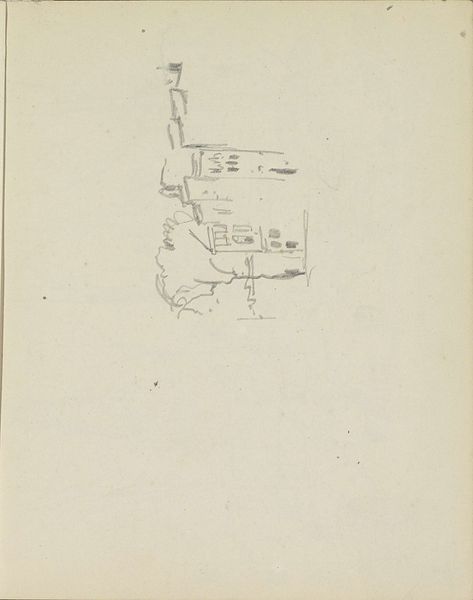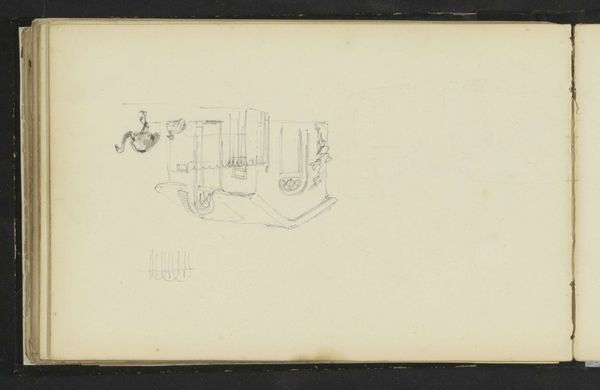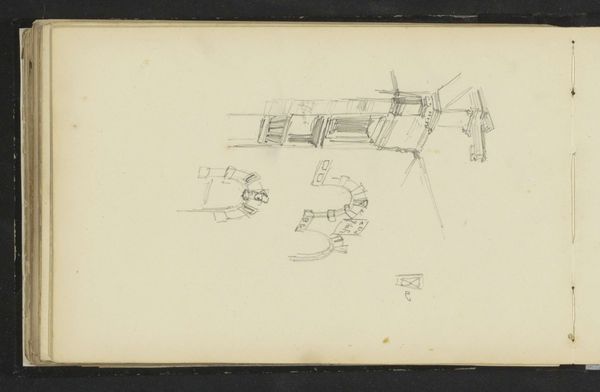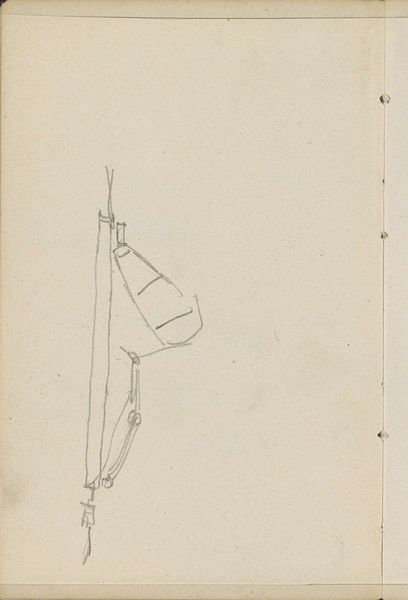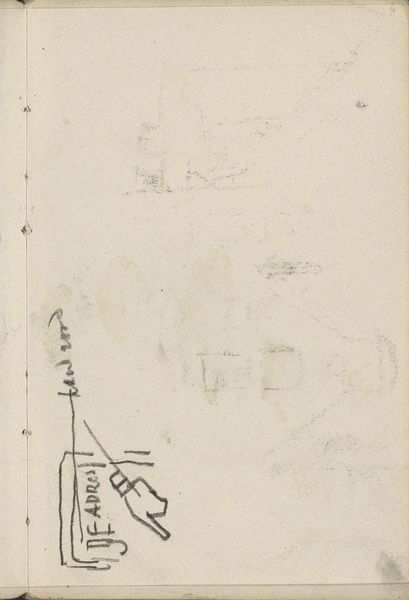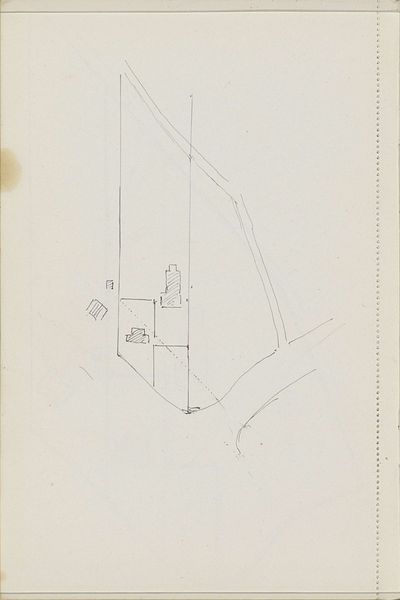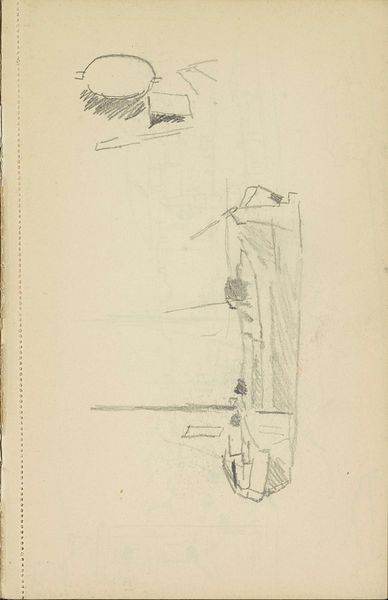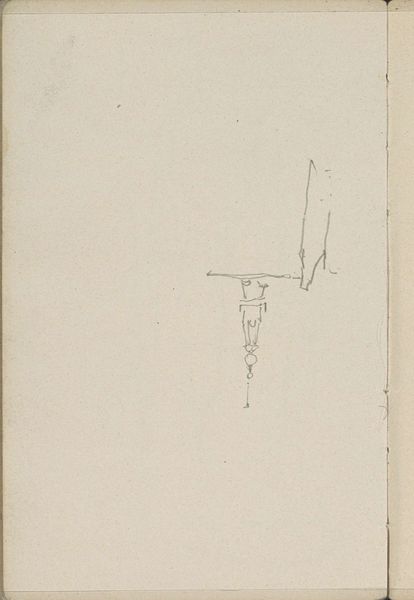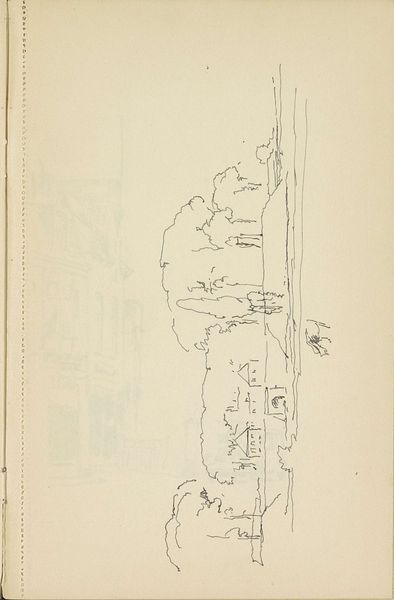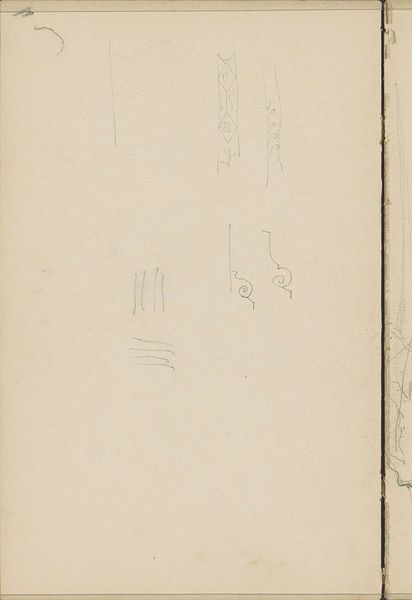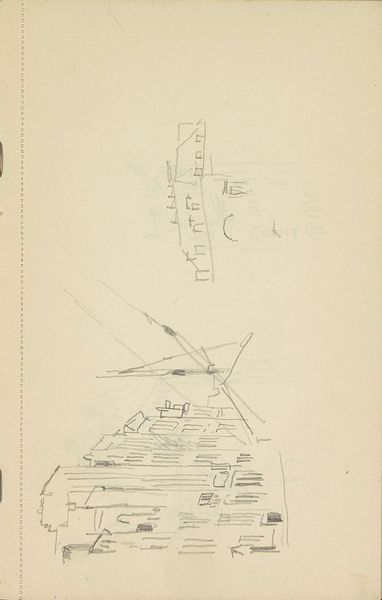
drawing, paper, pencil
#
drawing
#
amateur sketch
#
toned paper
#
light pencil work
#
hand drawn type
#
paper
#
form
#
personal sketchbook
#
idea generation sketch
#
ink drawing experimentation
#
pen-ink sketch
#
pencil
#
abstraction
#
line
#
sketchbook drawing
#
sketchbook art
Copyright: Rijks Museum: Open Domain
Curator: This pen and pencil drawing, "Houtblokken voor een hut" or "Wooden Blocks for a Hut," by Cornelis Vreedenburgh, likely produced between 1890 and 1946, offers a glimpse into the artist's sketchbook. Editor: My first impression is how light it is! You can barely see the block constructions, which renders them fragile and ghostly. I wonder about the kind of paper he’s using here... and what kind of pencils. Curator: Indeed. Vreedenburgh employed both pencil and pen and ink on paper, favoring a toned surface that allows the delicate lines to come forward. This choice of materials emphasizes accessibility; sketching materials available to a broader public compared to traditional painting. Editor: The sketch's amateur aesthetic suggests idea generation and artistic play. The rough lines undermine any established definitions between high art and craft. I find the drawing’s abstraction thought-provoking, since these quick pencil sketches feel ephemeral. I bet it gave him all sorts of directions for larger and possibly commissioned pieces! Curator: Precisely! The act of sketching in a notebook becomes central. The notebook itself suggests a mobile artistic practice – ideas jotted down while observing the landscape. This challenges a traditional art setting where one would spend considerable time rendering a work in oil, perhaps for a public commission. Editor: How would this image have been perceived by the public at that time? It must have been an exercise or preparation work, nothing for display or a public function. Curator: Probably just that, but its inclusion in a collection and exhibition now raises its cultural and historical significance as part of understanding the artistic process of the early 20th century. Its display today alters our understanding of how and why artwork ends up on gallery walls. Editor: Exactly! Now, by contemplating such artworks, we ask ourselves about art creation itself and its cultural footprint in contemporary visual imagery and social values. Curator: I concur; its existence opens up a fresh way to reconsider the value and impact of art, moving away from a conventional display.
Comments
No comments
Be the first to comment and join the conversation on the ultimate creative platform.
